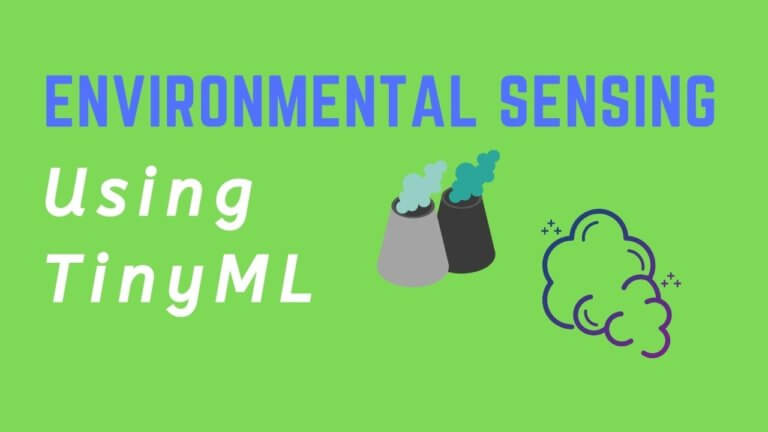What is Artificial Intelligence?
Artificial Intelligence (AI) is a term you’ve probably heard before — it’s having a huge impact on society and is widely used across a range of industries and applications. So, what exactly is AI and what can it do? Here’s a straightforward introduction.
Contents
- Why is artificial intelligence important?
- What can artificial intelligence do?
- Types of artificial intelligence
- What’s next for artificial intelligence?
- Conclusion
Artificial Intelligence (AI) is a part of our daily lives — from language translation to medical diagnostics and driverless cars to facial recognition — it’s making more of an impact on industry and society every day.
But what exactly is AI?
Simply put, AI is a technology that replicates human intelligence through computers, systems or machines.
This is a fairly broad description, however, and different people have different ways of interpreting it. Let’s consider a few:
- The MIT Technology Review describes AI as “the quest to build machines that can reason, learn, and act intelligently”
- IBM considers that “any system capable of simulating human intelligence and thought processes is said to have Artificial Intelligence”
- Andrew Moore, Dean of Computer Science at Carnegie Mellon University, suggests that AI is “the science and engineering of making computers behave in ways that, until recently, we thought required human intelligence”
- AI pioneers Minsky and McCarthy have said that for any task performed by a machine, if it would require intelligence for a human to do the same task, then that task is considered AI
Whatever its description, the concept of AI isn’t new and has been around since at least 1950. That was when Alan Turing, an influential computer scientist and mathematician, speculated about AI as ‘thinking machines’.
Turing went on to develop the ‘Turing test’, which identifies artificial intelligence based on a machine’s ability to do reasoning puzzles with human-like capabilities.
Why is artificial intelligence important?
AI has come a long way since the days of Turing and now has impressive capabilities including language interpretation and complex reasoning.
In 2011, for instance, IBM’s AI machine ‘Watson’ beat human champions in the popular word association game Jeopardy. This was quite an achievement for AI— the associations used in Jeopardy aren’t easy for traditional computer programs to deal with.
In another demonstration of AI’s capabilities, in 2015, UK firm DeepMind Technologies released AlphaGo. This is an AI machine that went on to beat the (human) world champion in the ancient game of Go.
Go is a highly complex game that requires intuition and creativity — it was previously considered impossible for a machine to beat a human champion at Go. AlphaGo’s victory was an important milestone for AI.
But other than these impressive feats, what makes AI important?
AI is important because it helps to improve our lives in many ways. A simple, yet powerful reason for AI’s growing appeal.
Let’s take a look at some examples of how is AI making an impact on our work and lives.
What can artificial intelligence do?
AI’s applications are many and varied, and the following are just a few examples:
Robotics
AI is powering advanced robotics in manufacturing assembly lines, warehousing, consumer electronics, drones, and even commercial kitchens.
Miso Robotics, for instance, creates autonomous robots that can cook and serve food. They use 3D thermal vision to learn from their surroundings and acquire new skills.
iRobot manufactures household robotic cleaning and lifestyle devices. Their most popular product is a vacuum cleaner that can determine room size, detect the type of flooring, remember where items are in a room, and choose optimal routes.
Autonomous vehicles
Autonomous vehicles (AVs)—or self-driving vehicles—are vehicles literally driven by AI rather than humans. Through a combination of AI-powered cameras and sensors, AVs maneuver through traffic and around corners while avoiding obstacles and stopping at traffic lights on cue.
AVs are also safe—they’re reported to have fewer accidents than human-driven vehicles.
Some well-known examples of AVs from the likes of Google and Tesla have been in development as passenger vehicles for years. But an innovative and lesser-known application of AVs is in supply chain logistics.
Gatik is a company that’s using AI-powered AVs to revolutionize the retail supply chain. Through an innovative approach, Gatik uses AVs to improve efficiencies and cut costs in middle mile delivery—business-to-business deliveries over short distances in busy urban environments.
Retail
When was the last time you queued for far too long at your local grocery store checkout? AI can help with this in future.
Checkout-free retail technology does away with the need for checkouts. It’s being implemented across a range of grocery stores and other venues, spearheaded by companies like Amazon Go and Zippin.
At the heart of this technology is AI—cutting-edge deep learning algorithms for accurate and versatile visual recognition tasks.
Healthcare
AI is enabling virtual assistants that free up nurses’ time and assist doctors with workflow. It’s also reducing the time and cost of research for pharmaceutical companies.
AI is making other inroads into healthcare through companies like:
- PathAI, which uses AI to improve its diagnostic accuracy
- Pager, which uses AI to analyze patients’ clinical data, and
- Atomwise, which uses AI to help with drug discovery.
Finance
AI is used in finance to provide accurate, real-time reporting and processing of high volumes of data.
The personal finance industry has also been using robo-advisors, which are AI-powered algorithms offering personalized financial planning tools. Financial services firm Betterment, for instance, uses AI to offer tailored portfolio management services to its clients.
In investment management, firms such as AlphaSense use AI-powered financial search engines to help their clients gain an information advantage in their investing process.
Social media
Companies like Facebook, Twitter, and Slack are using AI to improve the interaction, security, and experience of their platforms.
Twitter uses AI to help identify socially disruptive language, such as hate speech.
Slack, a workplace collaboration platform, uses AI to filter relevant messages and highlight knowledge expertise to help employees be more productive.
Marketing
AI has been very successful in helping companies improve customer segmentation, content creation, and lead generation.
Amplero is a firm that uses AI to help companies execute and optimize marketing campaigns. It does this through better customer segmentation and real-time analysis of buying preferences.
Drift is another firm that uses AI, through chatbots, to assist customers. The chatbots help with product questions and in identifying the best product or service to meet customer needs.
Types of artificial intelligence
AI clearly has plenty of capabilities and covers a broad range of applications.
As AI has evolved, it has also developed a range of sub-disciplines— Supervised Learning, Unsupervised Learning, Reinforcement Learning, Neural Networks, Machine Learning, Deep Learning, Natural Language Processing, and Computer Vision are all examples of AI.
The above examples of AI applications use one or more of these sub-disciplines in doing what they do.
Drift, for instance, uses Natural Language Processing to power its chatbots, while Miso Robotics uses deep learning to help its robots “see” and prepare food and AlphaSense uses a range of sub-disciplines in order to gain an investment advantage.
But it’s not always easy to describe the different sub-disciplines of AI, as they often overlap in practice and there’s no clear agreement on how to organize them.
To help make sense of it, Wikipedia offers a comprehensive overview of AI including its history, sub-disciplines, applications, and challenges. For a more concise summary of AI, this article by Richaldo Elias is also worth reading.
Alternatively, Francesco Corea, a complexity scientist and technology investor, has developed a useful way of organizing AI called the ‘AI Knowledge Map’. You can learn about it in this article. Corea’s Knowledge Map offers a neat visual summary of how the different areas of AI relate to each other.
Many newcomers to AI will likely be involved in Machine Learning, Deep Learning or Natural Language Processing. These areas have enjoyed plenty of research over recent years and have been successfully deployed in a large number of use cases.
What’s Next for AI?
According to Simon Stringer, Director of the Oxford Laboratory for Theoretical Neuroscience:
“The aim of artificial intelligence research is to develop a machine capable of undertaking any cognitive task that the human brain can perform”
Simon Stringer
What does Stringer mean by this?
He is suggesting a state of AI that is often referred to as ‘Artificial General Intelligence’ or AGI.
AGI is seen as a sort of “holy grail” for AI. It would effectively replicate the way a human brain functions. This includes perception, sensory interpretation of surroundings, and the ability to learn causal relationships.
AGI systems would achieve human-like functioning in a range of circumstances. It would greatly enhance the role of AI in our everyday lives.
Today’s AI, despite its impressive achievements, can be viewed more as a sophisticated application of ‘customized automation’, rather than having truly human-like capabilities.
When an AI model is trained, for instance, it finds a set of parameters that best fit its training and evaluation framework. When that model is deployed, it uses its trained parameters to do its work in a more-or-less ‘machine-like’ manner. As useful as this is, it’s a far cry from the degree of cognitive intelligence that AGI promises.
As we progress towards AGI, AI as we know it will likely continue developing at a rapid pace and provide great benefits for society. And there are certainly some exciting possibilities to look forward to!
Conclusion
AI seeks to replicate human intelligence through computers, systems, or machines. It already has many successful use cases and is a rapidly growing area of technology.
Some areas of AI are well established, such as Deep Learning and Natural Language Processing. Others are starting to grow and find new applications as they take advantage of today’s unprecedented data and computing power.
More importantly, AI is helping to improve our lives by allowing us to do more, with greater efficiency and often with better outcomes.
The future looks bright for AI and it’s likely to see plenty of growth and evolution in the years ahead.
Indeed, it’s already happening.





